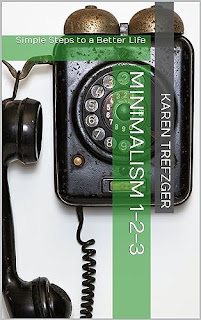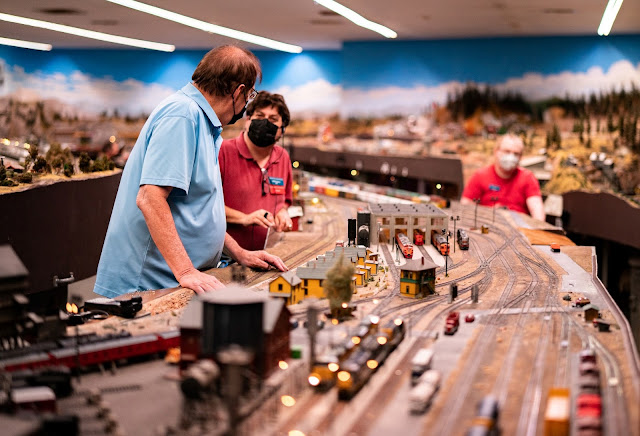5 Steps to Stop Being a Clutter Victim and Find Decluttering Success
I was raised by, and for a long time followed the pattern of, someone who was a clutter victim. My mom kept all. the. things:
- school papers (from creative and one-of-a-kind all the way through spelling tests)
- sewing notions (from useful leftovers to the tiniest unusable snippets)
- books (from re-readable classics to dime store romances)
- photos (from well-shot memorable occasions to blurred "who is that?" mysteries)
... and more. She purchased additional bins and reorganized belongings constantly, seeking order and cleanliness amidst the piles. She stocked up on "just in case" items and overbought "bargains" that were "just too good to pass up." Our closets were always "too few" and "too small." I grew up in one town, but we moved house five times in 13 years because we "needed more room."
You don't have to be a hoarder to be a clutter victim.
My mom never thought of herself as a hoarder, because she had relatives who lived with head-high piles of newspapers that created pathways from the front door to the kitchen table to the favored easy chair. These family members had kitchen counters piled high with dirty dishes and canisters of food, bedrooms where you couldn't see the clothing-covered floor, and garages and outbuildings with doors that wouldn't open more than a few inches because of the piles of things inside. When compared with all of that, my mother's stockpiling looked normal.
And yet I know she felt the stress and frustration of owning and maintaining and storing and cleaning all of those unnecessary things. I know she never felt like she had enough. I'm pretty sure she dreamed of a very large, uncluttered home (with a regular cleaning service, because I doubt she wanted to clean a larger house), where all of the stored items looked Martha Stewart-pretty.
If you're reading this, you might have some of the same feelings and dreams.
- How can you finally stop looking for ways to store even more or wishing for more space?
- Can this perpetual chore of collecting, rotating, and moving come to an end?
- Is it possible to figure out what you really need and live happily with that?
- Can you ever feel satisfied?
The short answer is yes. The longer answer is coming in a bit.
It's a problem of mindset, not of stuff.
When you feel overwhelmed and trapped by all of your stuff, or you think you'd be happy if you only had more space, you're living like a victim.
Victim mentality tells you that:
- change is impossible
- you're never going to succeed where you've failed before
- "they" are conspiring against you
- this is the way you are, so there's no point in trying something new
This is not just about your stuff. This kind of thinking can negatively impact every corner of your life.
Instead, you need to start thinking like a minimalist.
Now I don't mean you have to get rid of almost everything you own and move into a 300-square-foot tiny house.
But a minimalist mindset is the opposite of victim mentality. It promises that life can be easier and better, and that you can experience peace and contentment in your uncluttered home. It says you can be more decisive and in control of your surroundings. It lets you feel confident that you can take consistent, small steps toward your desired outcome.
A minimalist mindset lets you see abundance instead of lack.
Related article: The Truth About Clutter
5 simple steps to a new mindset
You might feel overwhelmed or even fearful about decluttering your home. Sentences like "There's just so much" and "I'll never be done" may enter your head. If you think about every single step you'll have to take to get clutter-free, you might quit before you start.
That's why it's important to look at the big picture. You're going to take the process step by step, but it isn't those many small steps you want to focus on.
1. Start with the end in mind.
Always remember your final goal – that peaceful, beautiful space with everything you need and love and nothing you don't. This process is not about how much you're removing. It's about the new, positive lifestyle you're creating.
2. Envision your cleared space.
Take some time to think about how you'll use your uncluttered spaces. How will they make you feel? How much easier will they be to clean and keep in order? How will they function for you and your family, supporting the activities you want to do?
3. Journal your thoughts.
Write about the activities that will take place in your home, the relationships that will develop, the freedom and flexibility you will feel. This is your dream.
4. Accept that there will be setbacks.
This is the real world, and paths to change are never completely smooth. Acknowledge that, and realize that you're going to learn from this process. It might be two steps forward, one step back, but every time you make a decision about what to keep and what to remove, you get better at understanding yourself and what you value. You're going to gain focus and confidence.
5. Always give thanks.
You've been living with lots of things you don't really want – literally hundreds of items that just sit in a drawer or on a shelf or in a box in storage somewhere. All of this excess is evidence that you have enough. You don't have to fear being in need.
Be grateful that your needs are so abundantly met. The more you give thanks, the easier it will be to see things to be thankful for – not just possessions, but people, events, opportunities, beauties, and more. Focusing on the goodness in your life is an upward spiral that makes every day better.
Your positive minimalist mindset
Reducing your possessions allows you to put people over things, be generous with donations, and express gratitude for all you have. When you practice living with less, you uncover your creativity and resourcefulness. You no longer have to feel like a victim.
Related article: Time to Get Off Auto-Pilot and Find the Freedom of Minimalism
Want more step-by-step advice for a simpler life? My new Minimalist Basics series can help you find the life you want, with less stuff to distract you from it. I think you'll appreciate Volume 2, Minimalism 1-2-3: Simple Steps to a Better Life, available on Amazon.*
* This blog is reader-supported. If you buy through my links, I may earn a small commission.







Comments
Post a Comment